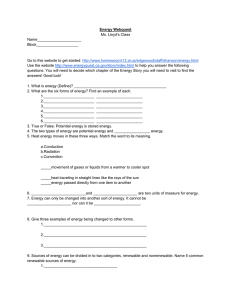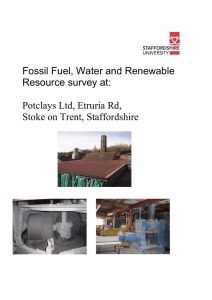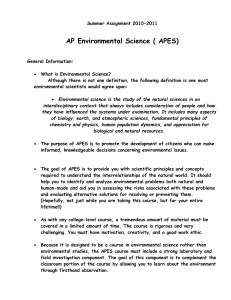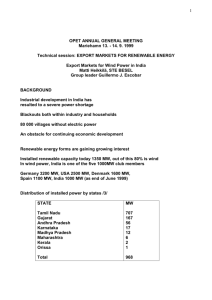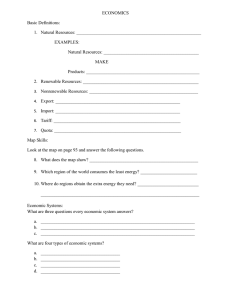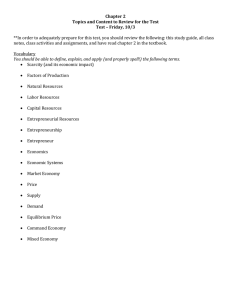Will alternative/renewable energy sources be developed in a free-market economy (or are govenment stimuli needed)?
advertisement
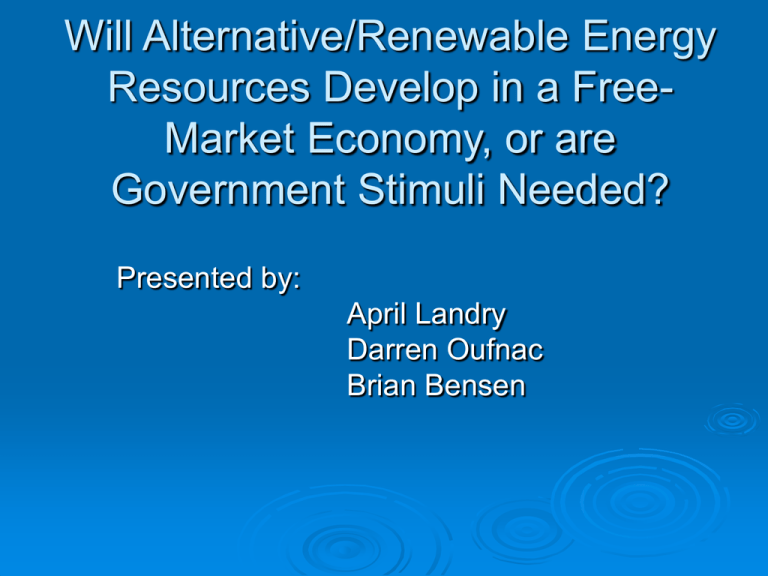
Will Alternative/Renewable Energy Resources Develop in a FreeMarket Economy, or are Government Stimuli Needed? Presented by: April Landry Darren Oufnac Brian Bensen Outline Facts Steady-State Economics Grey Area Questions Group Consensus on General Question Facts USA constitutes 4.5% of the world population, yet we consume 25% of planets energy resources and emit 25% of the global greenhouse gas emissions. In order to stabilize the concentration of carbon dioxide in the atmosphere at 550 ppm (double the pre-industrial amount) within the next 100 years would require cutbacks of ~70% from current levels. For USA in 2001, renewable energy generated was 5.5 quadrillion(1015) BTU of the total 97.3 quadrillion BTU of energy consumed or about 5.7%. Facts cont’d 1995 numbers: Utilities: • 1.8¢/kWh for coal-fired plants • 3¢/kWh for high-efficiency gas turbines Non-Utilities: • 5.5¢/kWh for nonrenewable generation • 8.78¢/kWh avg. for renewable generation Older coal plants (~1940’s) escape the 1990 Clean Air Act through a congress approved “grandfather” clause. It is estimated by Environmentalists to be about a 2¢/kWh subsidy. This is due to their lack of incorporating cleaner processes to reduce NO/NO2 & SO2 emissions. Steady-State Economics In 1991 Herman Daly authored Steady-State Economics. “A sustainable society requires: 1) The rate of usage of renewable resources should not exceed their rate of natural regeneration. 2) The rate of usage of nonrenewable resources should not exceed the rate at which renewable substitutes are found and developed. 3) The rate of pollution emissions should not exceed the assimilative capacity of earth. “ Grey Area Questions Is it ethical to just use “as much energy as we want” right now, just because we can? How will our behavior at the beginning of the 21st century appear to future generations when out in a historical context? Should the government tax fossil fuels so that their cost is equivalent to truly renewable resources (e.g., wind, solar)? General Question Will alternative/renewable energy sources develop in a free-market economy, or are government stimuli needed? References COONEY, CATHERINE M. Environmental Science and Technology. Dec. 1, 1999. pg. 495. Annual Energy Outlook 2003 With Projections to 2025: Overview. DOE/EIA-0383(2003). http://www.eia.doe.gov/oiaf/aeo/index.html Schnoor, Jerald L. “An Environmental Challenge.” Environmental Science and Technology. April 1, 2003. pg. 119 A.

